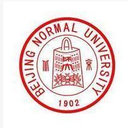Differentiation of adipose-derived stem cells toward nucleus pulposus-like cells induced by hypoxia and a three-dimensional chitosan-alginate gel scaffold in vitro.
Nyckelord
Abstrakt
BACKGROUND
Injectable three-dimensional (3D) scaffolds have the advantages of fluidity and moldability to fill irregular-shaped defects, simple incorporation of bioactive factors, and limited surgical invasiveness. Adipose-derived stem cells (ADSCs) are multipotent and can be differentiated toward nucleus pulposus (NP)-like cells. A hypoxic environment may be important for differentiation to NP-like cells because the intervertebral disc is an avascular tissue. Hence, we investigated the induction effects of hypoxia and an injectable 3D chitosan-alginate (C/A) gel scaffold on ADSCs.
METHODS
The C/A gel scaffold consisted of medical-grade chitosan and alginate. Gel porosity was calculated by liquid displacement method. Pore microstructure was analyzed by light and scanning electron microscopy. ADSCs were isolated and cultured by conventional methods. Passage 2 BrdU-labeled ADSCs were co-cultured with the C/A gel. ADSCs were divided into three groups (control, normoxia-induced, and hypoxia-induced groups). In the control group, cells were cultured in 10% FBS/DMEM. Hypoxia-induced and normoxia-induced groups were induced by adding transforming growth factor-β1, dexamethasone, vitamin C, sodium pyruvate, proline, bone morphogenetic protein-7, and 1% ITS-plus to the culture medium and maintaining in 2% and 20% O2, respectively. Histological and morphological changes were observed by light and electron microscopy. ADSCs were characterized by flow cytometry. Cell viability was investigated by BrdU incorporation. Proteoglycan and type II collagen were measured by safranin O staining and the Sircol method, respectively. mRNA expression of hypoxia-inducing factor-1α (HIF-1α), aggrecan, and Type II collagen was determined by reverse transcription-polymerase chain reaction.
RESULTS
C/A gels had porous exterior surfaces with 80.57% porosity and 50-200 üm pore size. Flow cytometric analysis of passage 2 rabbit ADSCs showed high CD90 expression, while CD45 expression was very low. The morphology of induced ADSCs resembled that of NP cells. BrdU immunofluorescence showed that most ADSCs survived and proliferated in the C/A gel scaffold. Scanning electron microscopy showed that ADSCs grew well in the C/A gel scaffold. ADSCs in the C/A gel scaffold were positive for safranin O staining. Hypoxia-induced and normoxia-induced groups produced more proteoglycan and Type II collagen than the control group (P < 0.05). Proteoglycan and Type II collagen levels in the hypoxia-induced group were higher than those in the normoxia-induced group (P < 0.05). Compared with the control group, higher mRNA expression of HIF-1α, aggrecan, and Type II collagen was detected in hypoxia-induced and normoxiainduced groups (P < 0.05). Expression of these genes in the hypoxia-induced group was significantly higher than that in the normoxia-induced group (P < 0.05).
CONCLUSIONS
ADSCs grow well in C/A gel scaffolds and differentiate toward NP-like cells that produce the same extracellular matrix as that of NP cells under certain induction conditions, which is promoted in a hypoxic state.


